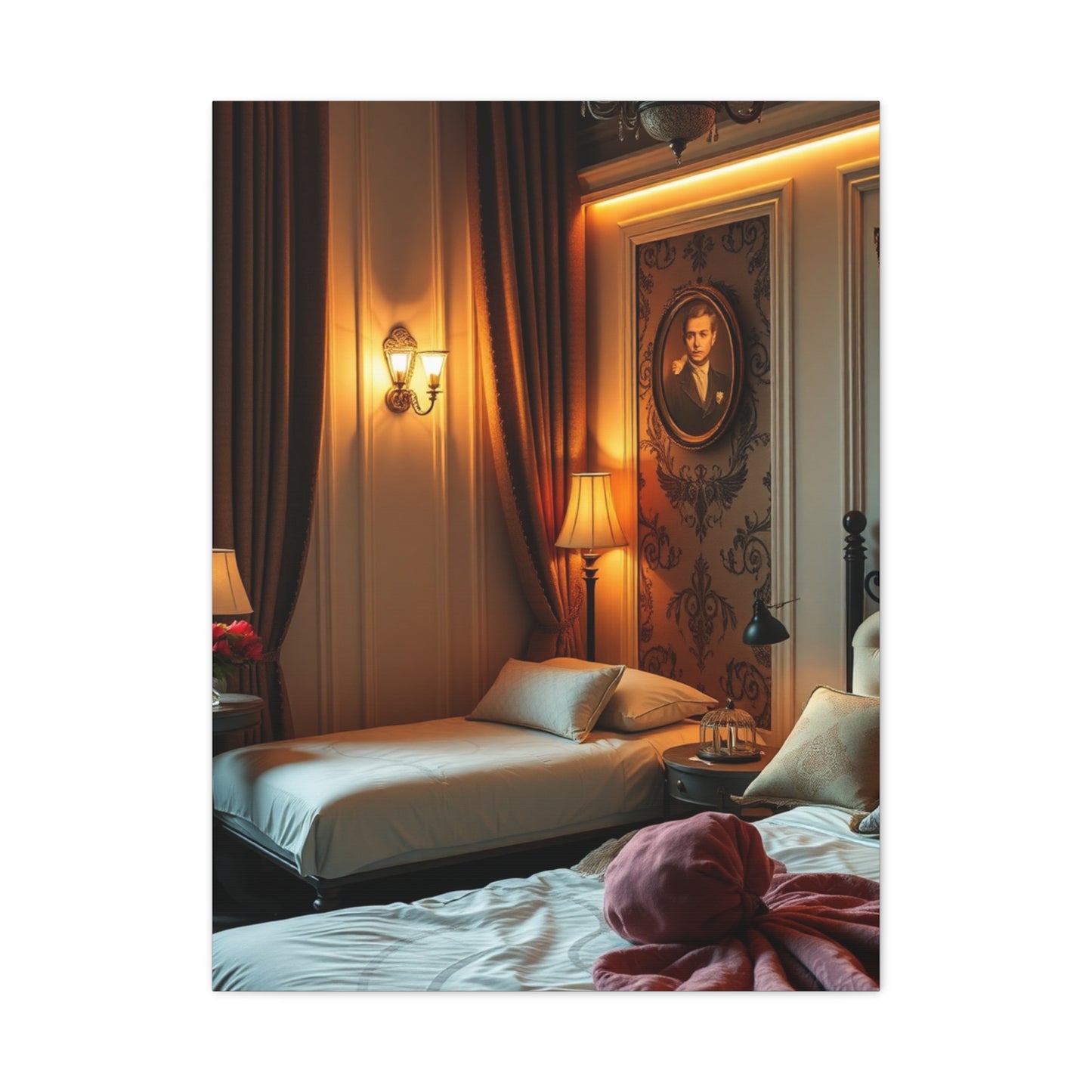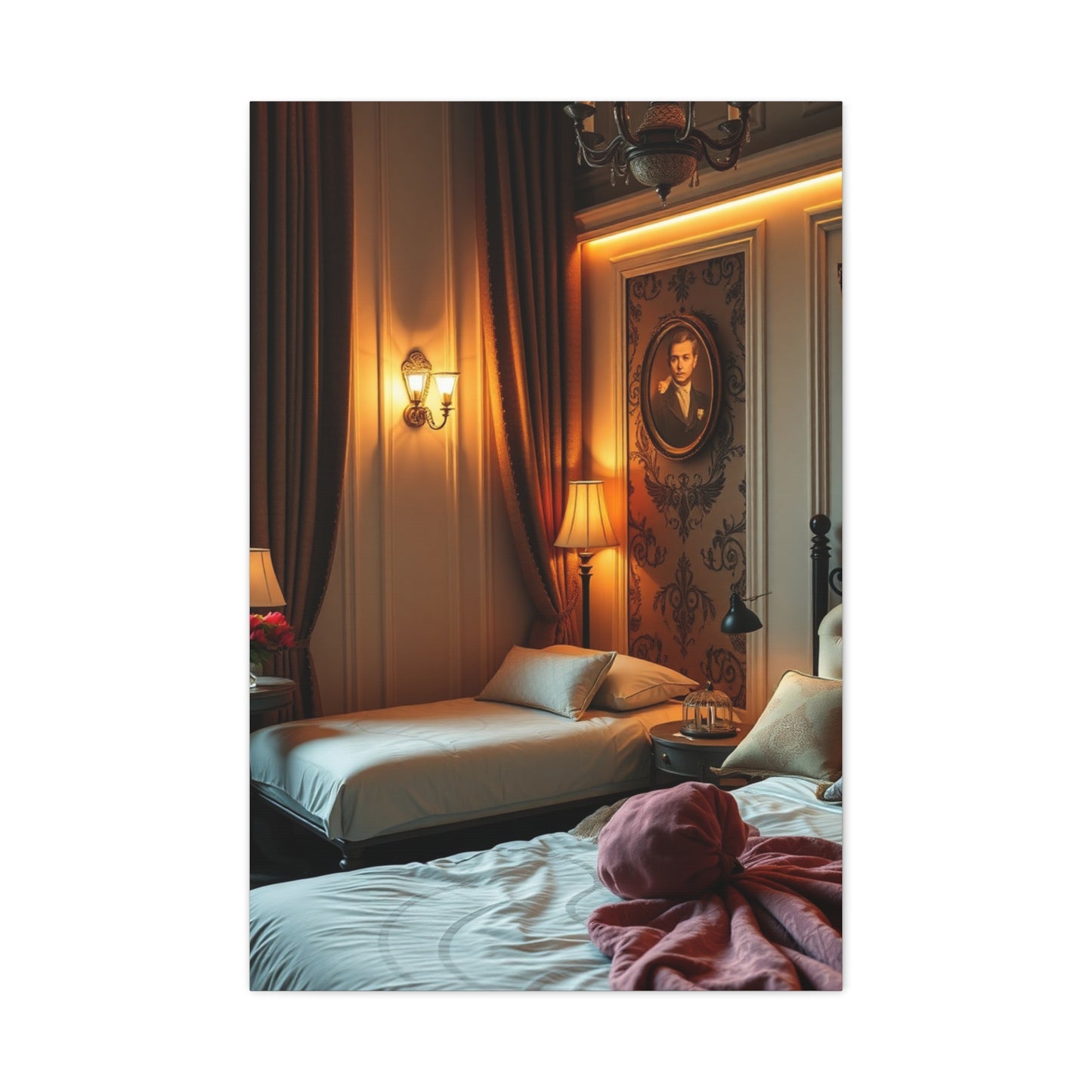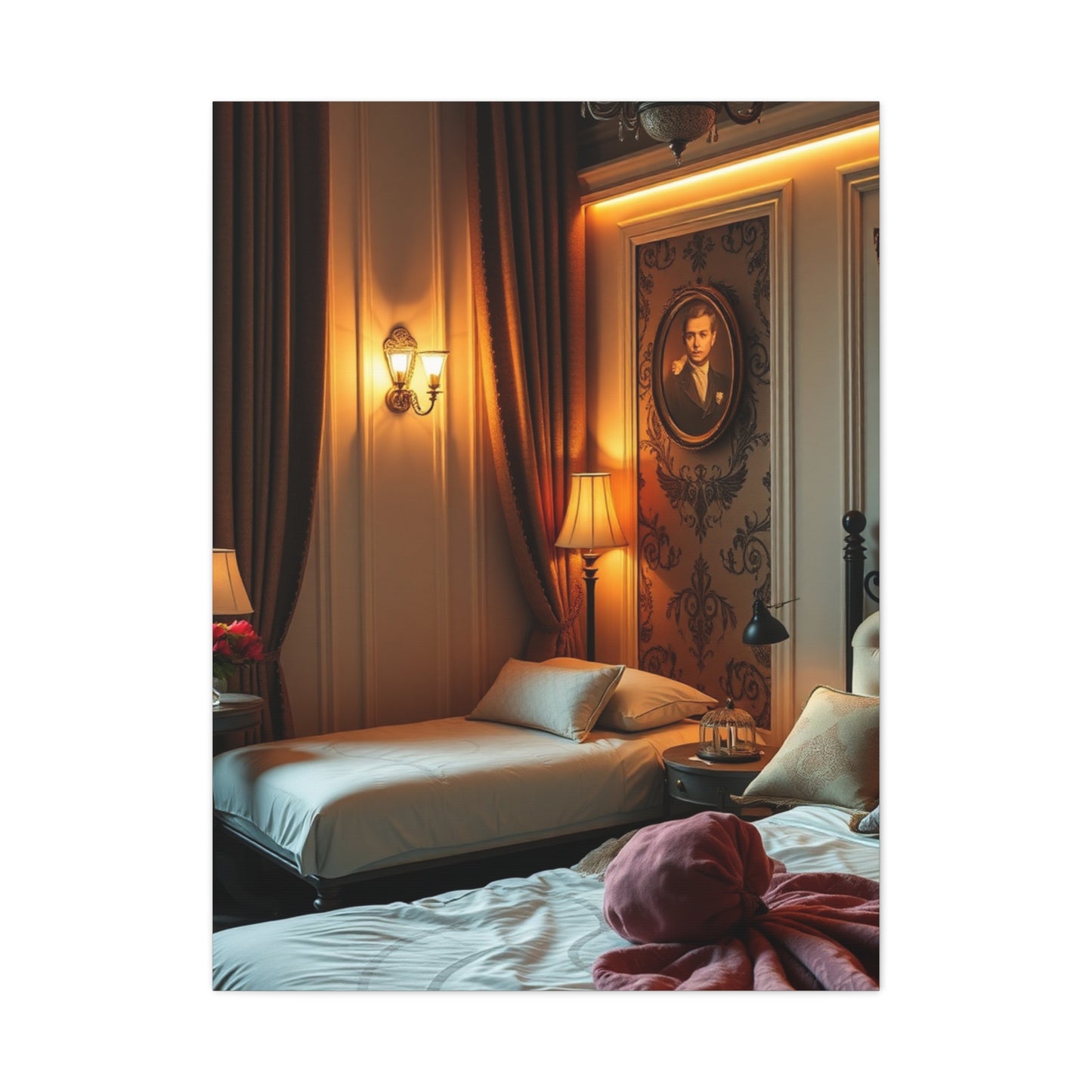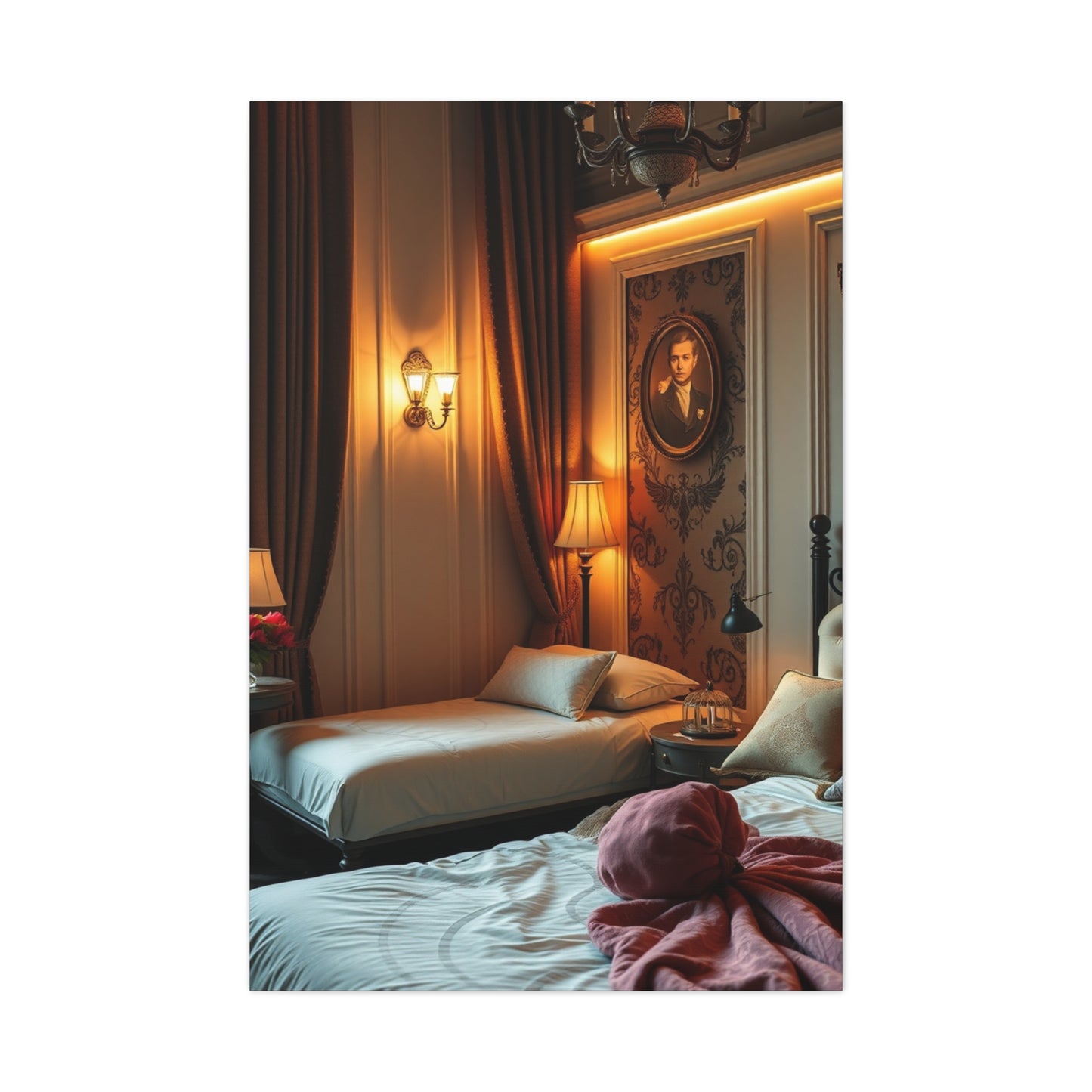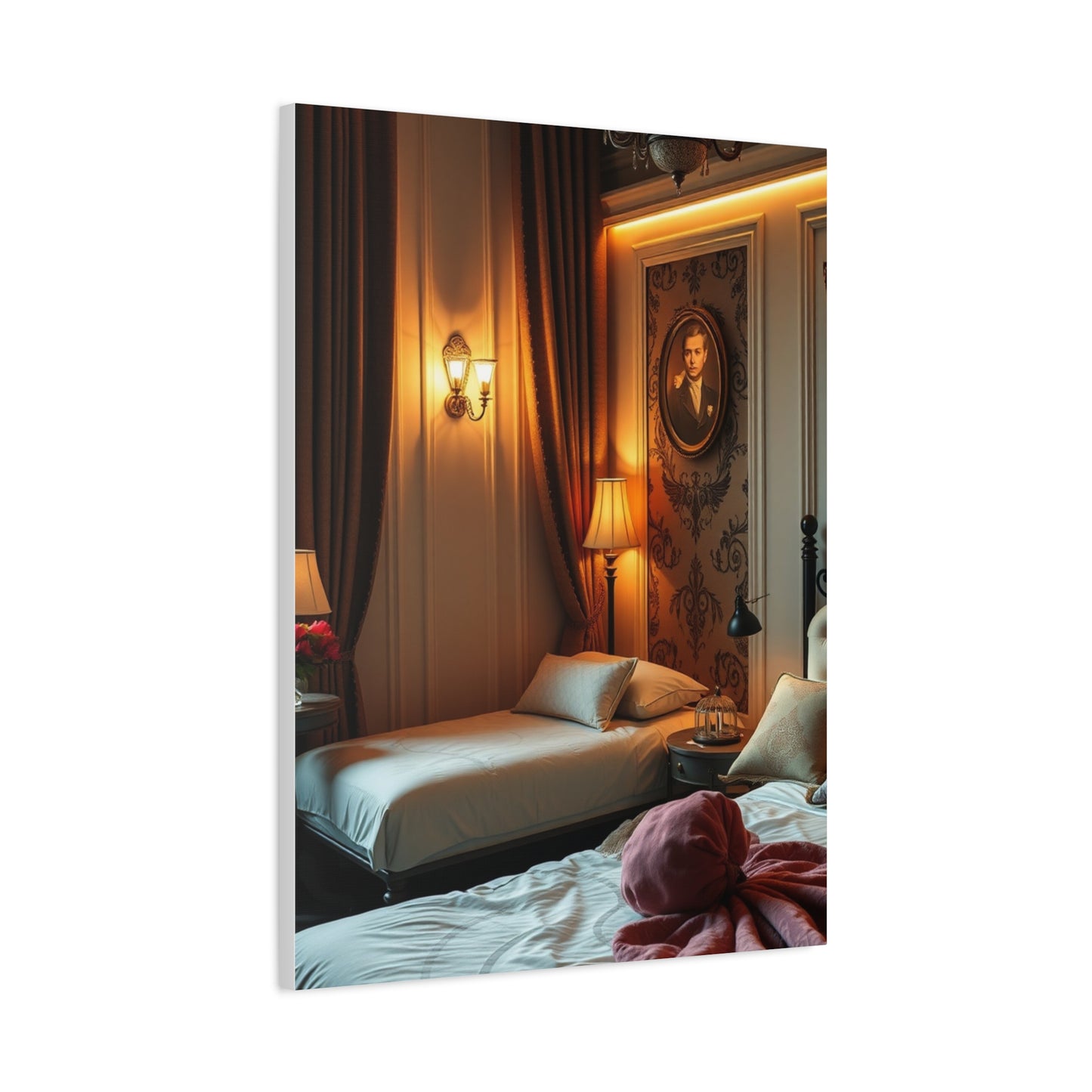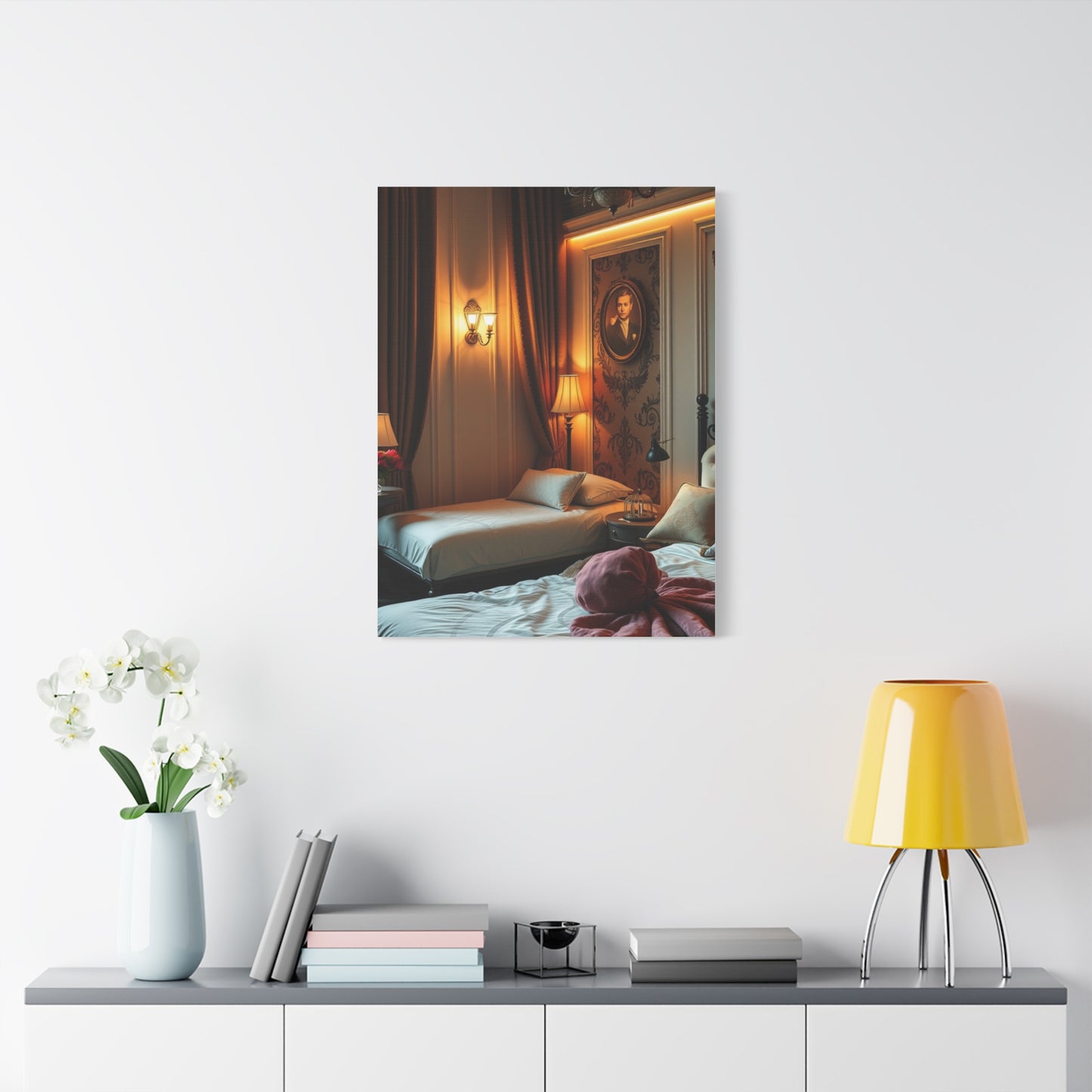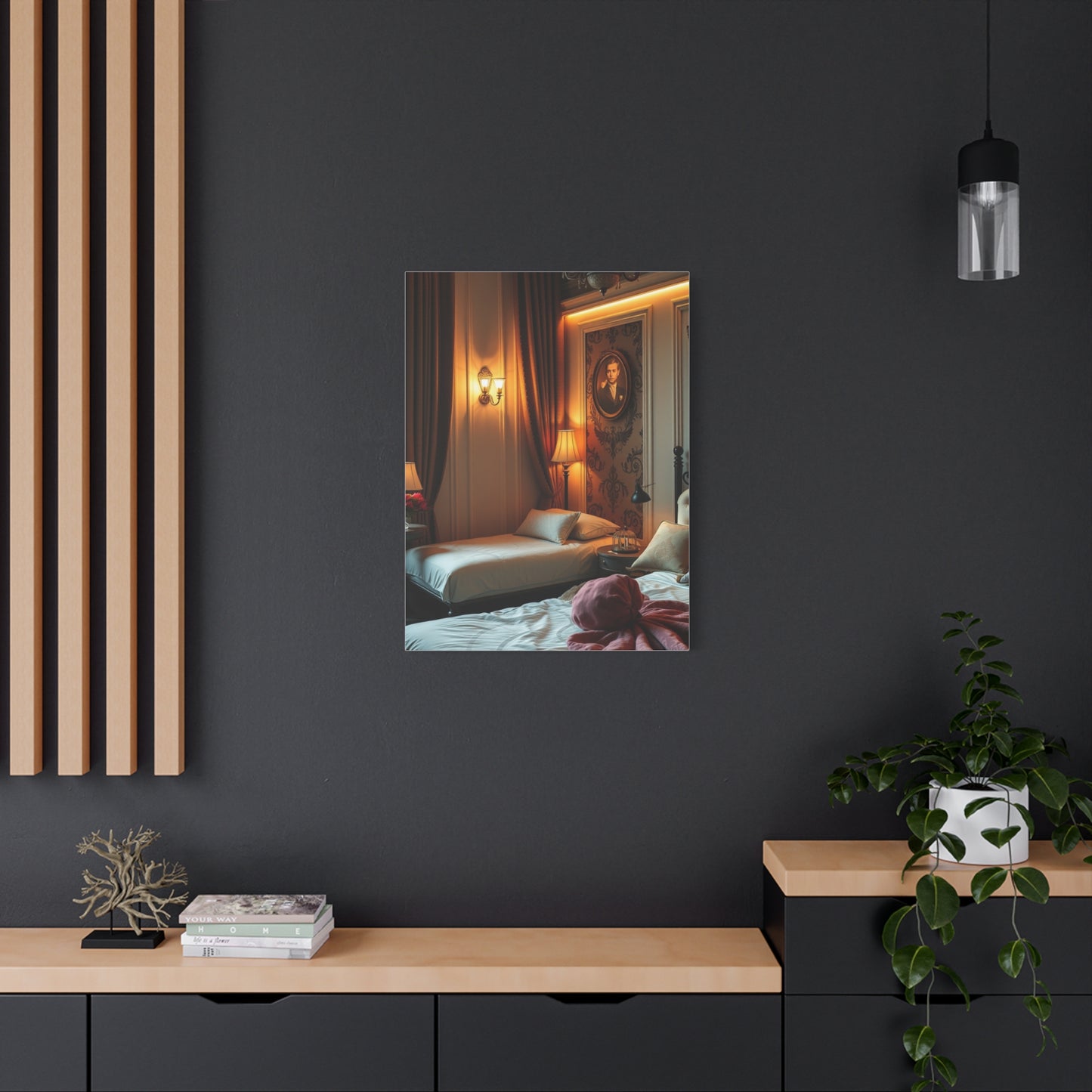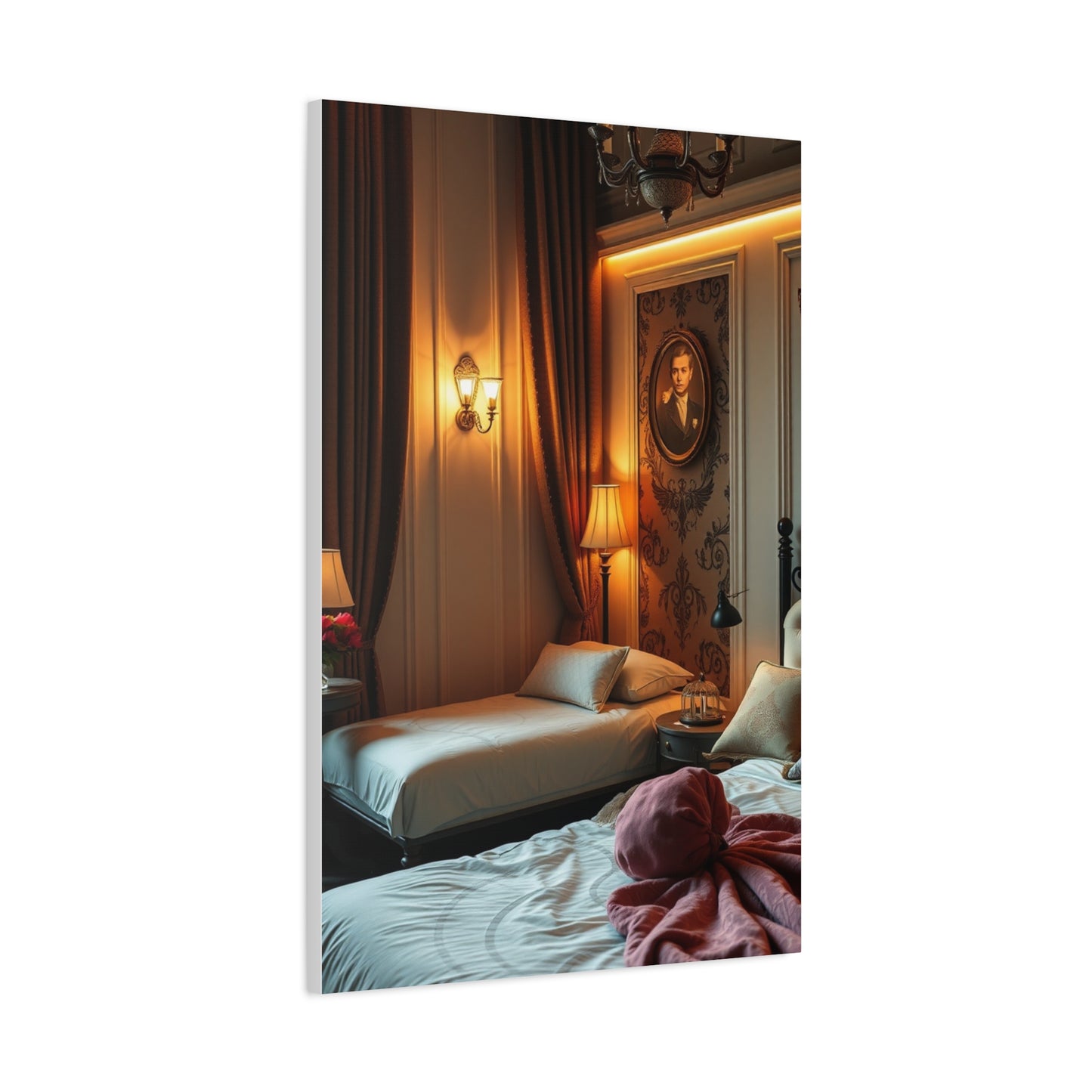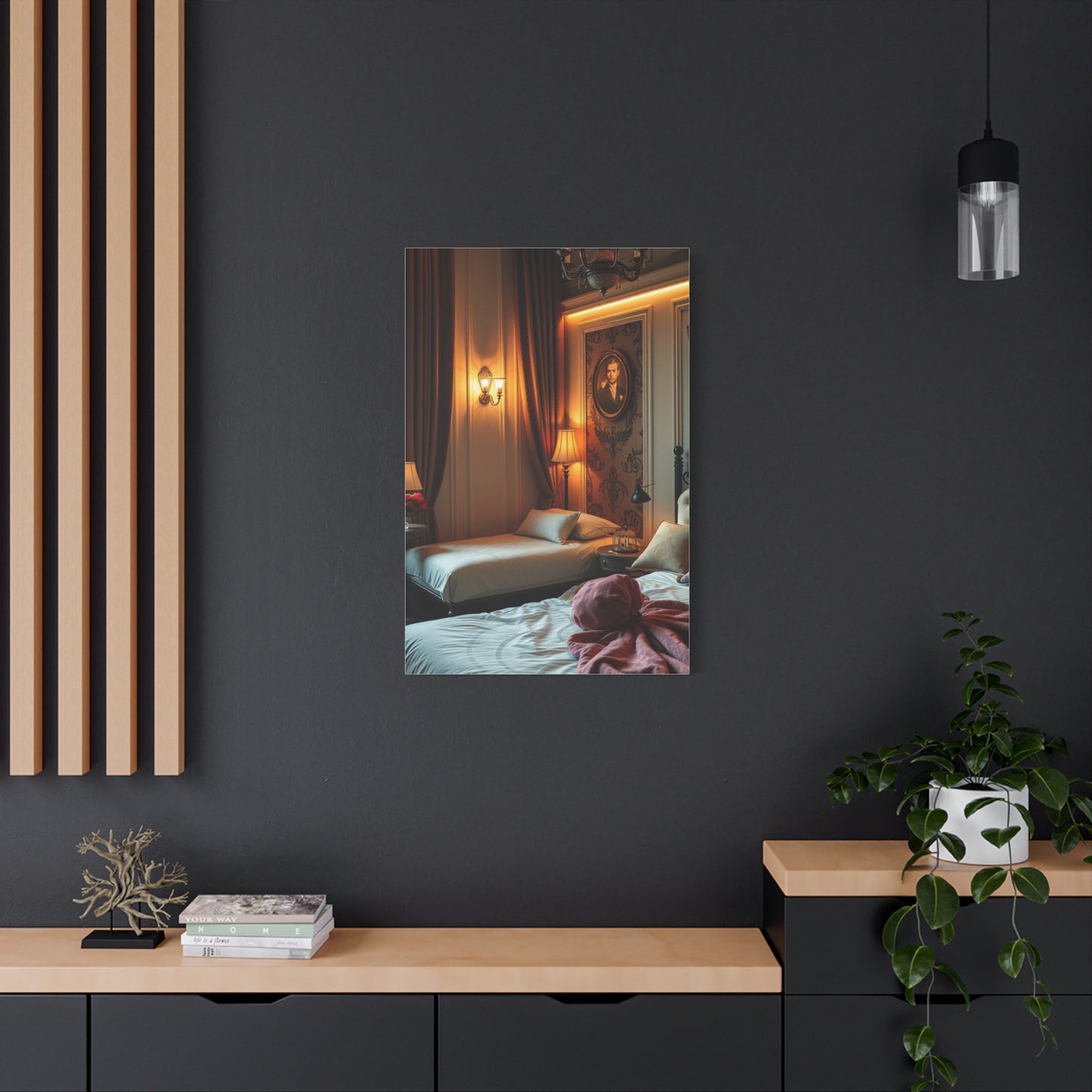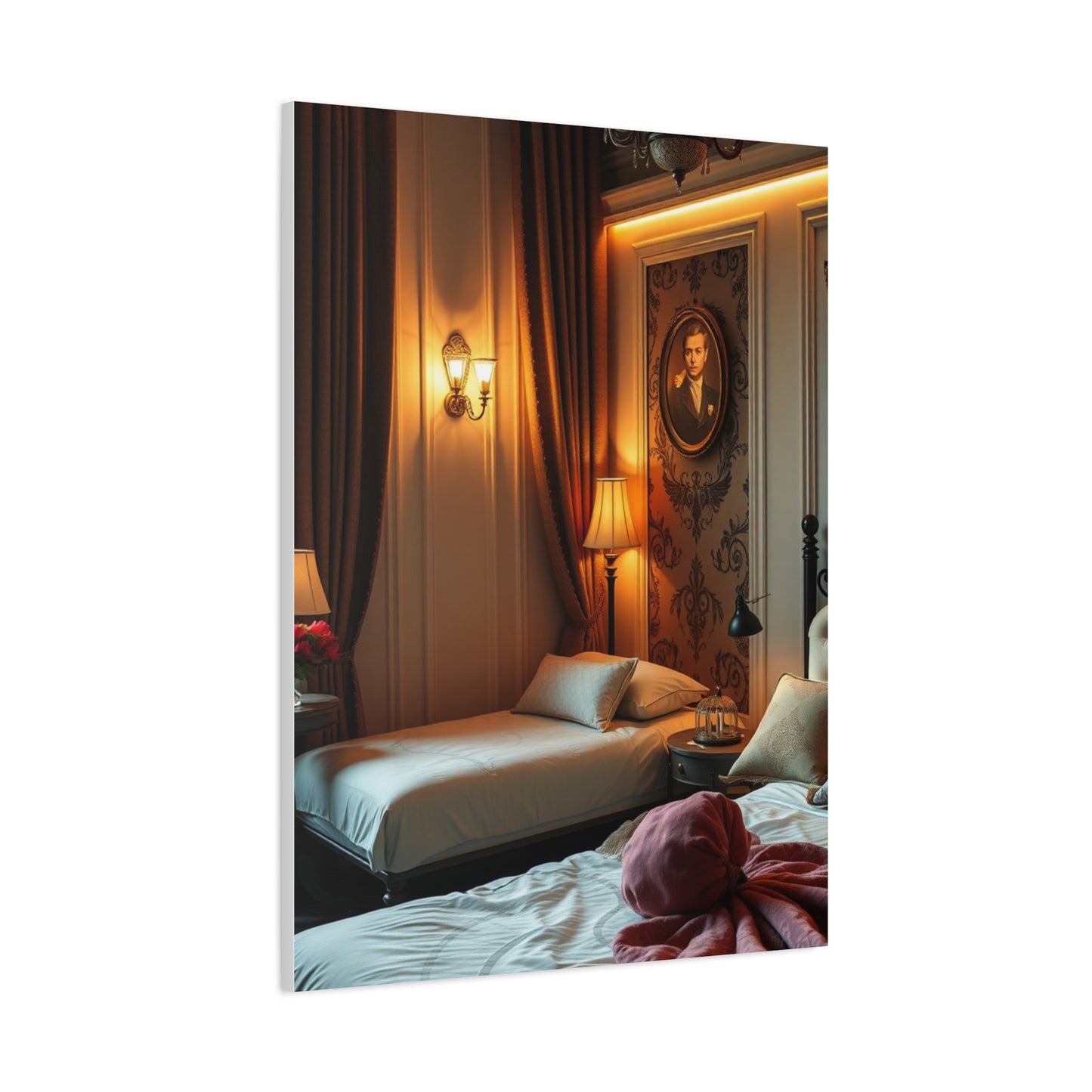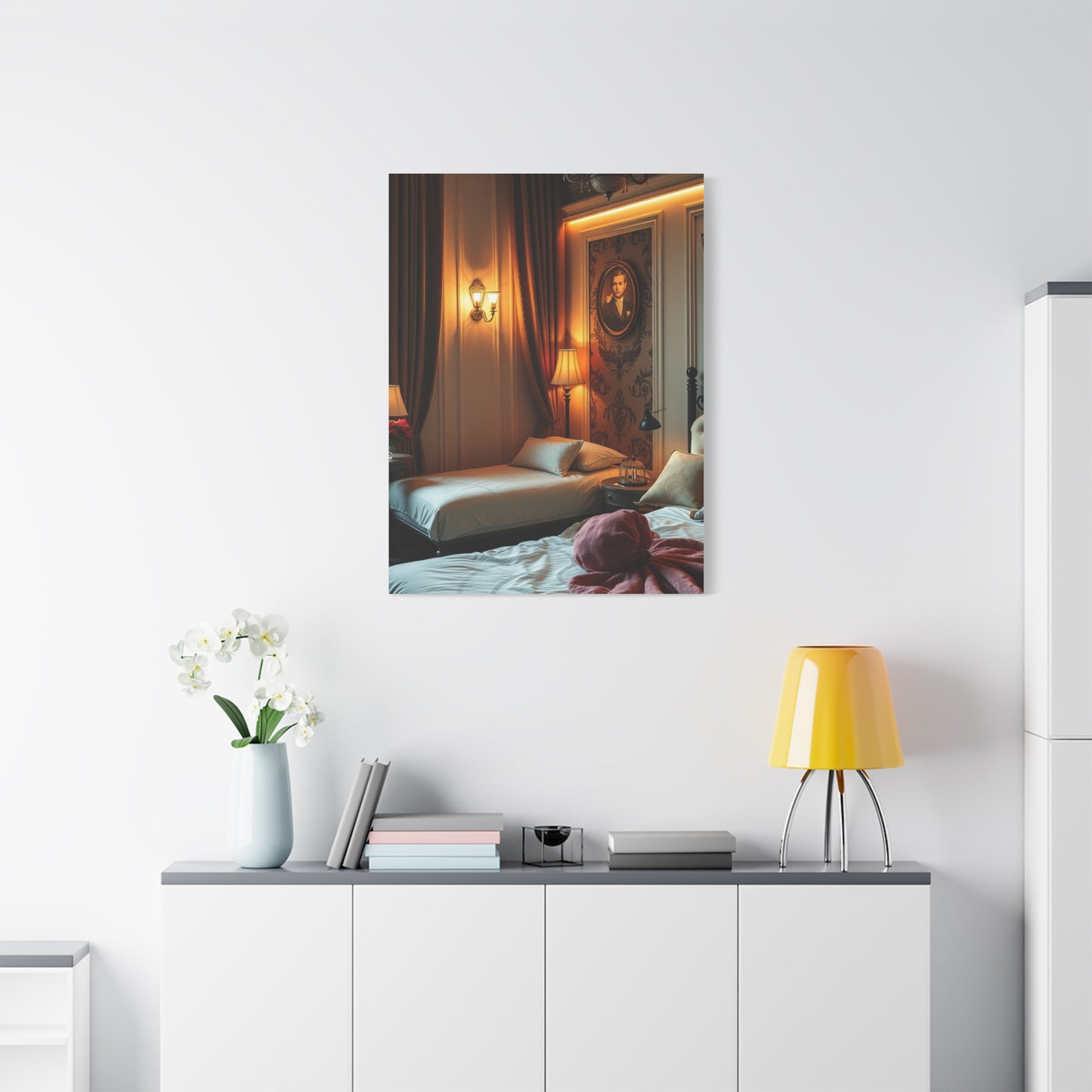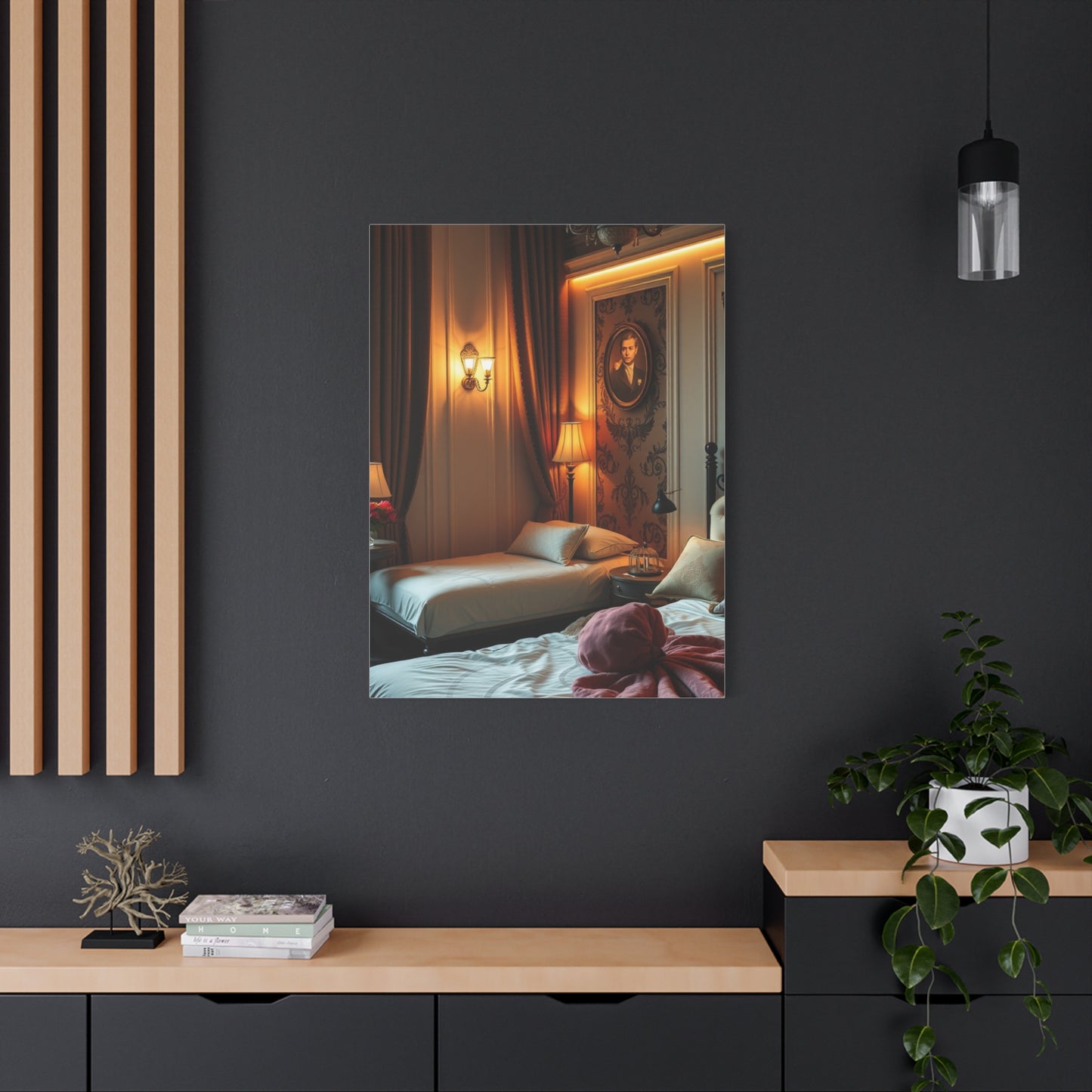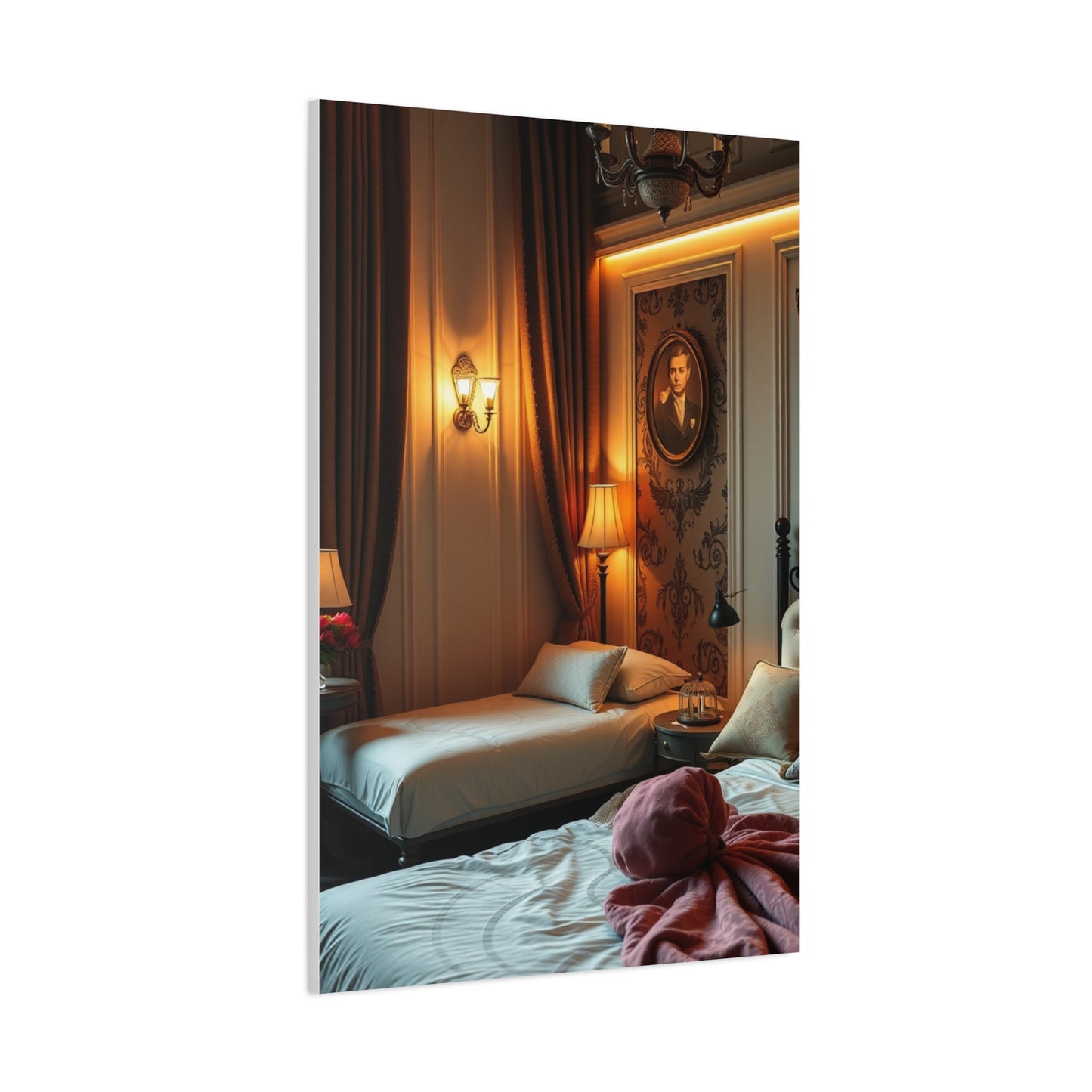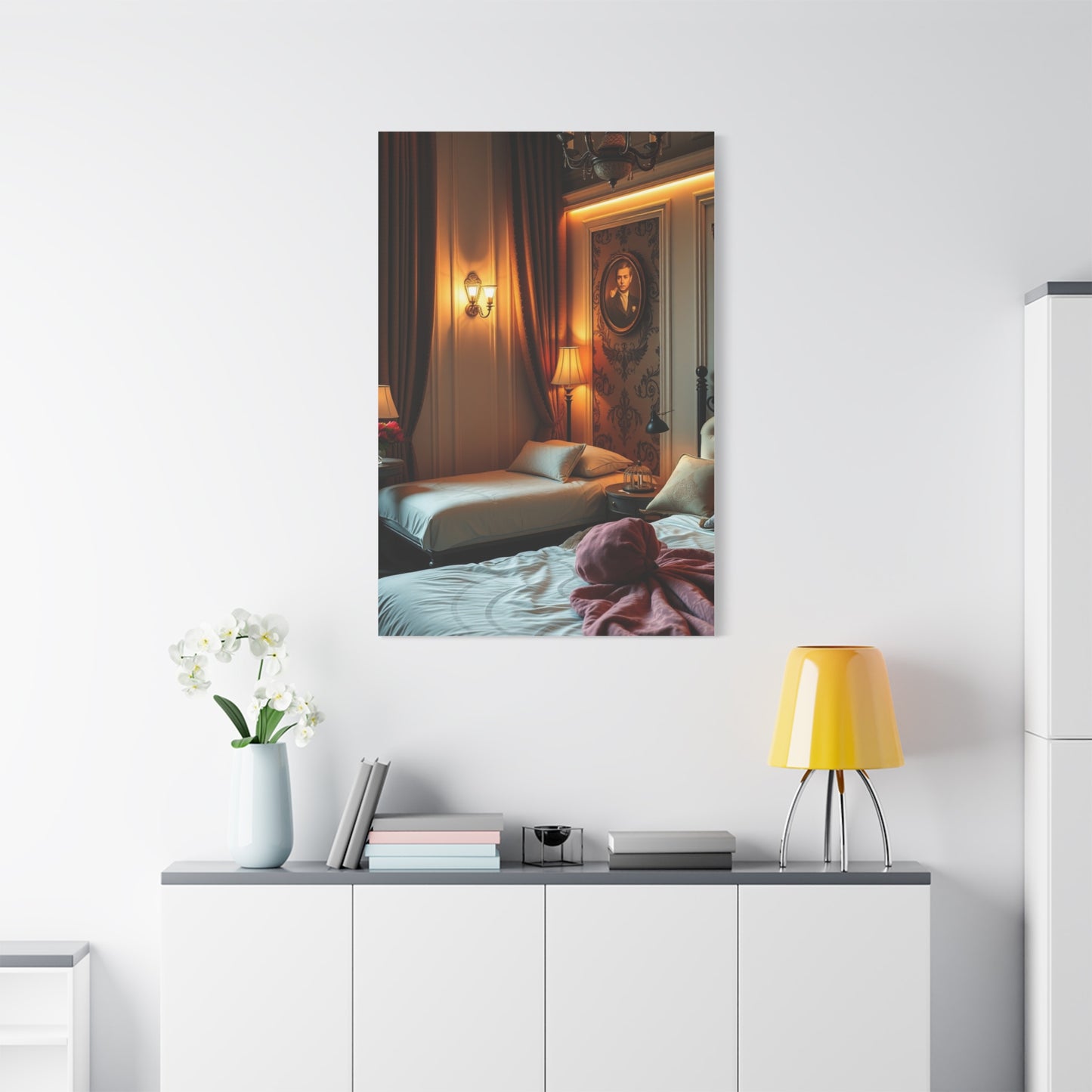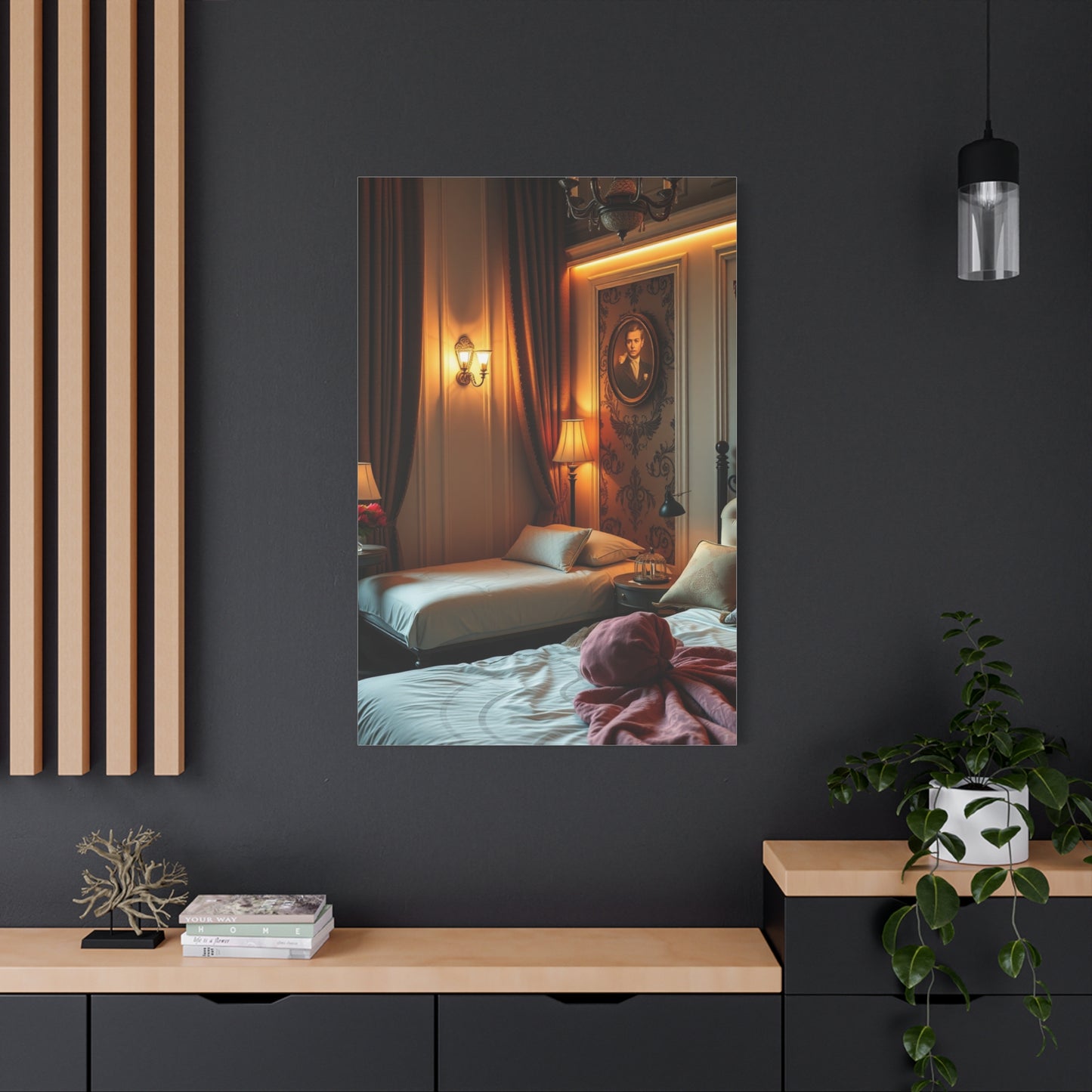Enchanted Reverie Canvas: Exploring the Mystical World of Dreamlike Artistic Expression
The concept of enchanted reverie canvas represents a fascinating intersection between artistic expression and the ethereal realm of dreams and imagination. This unique approach to creative work combines traditional artistic techniques with elements of fantasy, mysticism, and subconscious exploration. At its core, an enchanted reverie canvas serves as a portal into otherworldly dimensions, allowing artists to capture fleeting moments of inspiration that exist between waking consciousness and dream states.
Artists who work with enchanted reverie canvas techniques often describe a profound connection to their inner creative spirit. This connection manifests through layers of symbolic imagery, ethereal color palettes, and dreamlike compositions that transport viewers into alternate realities. The practice involves entering a meditative or contemplative state where the boundaries between imagination and reality become fluid and permeable.
The foundation of enchanted reverie canvas work lies in its ability to transcend conventional artistic limitations. Rather than adhering strictly to realistic representation or abstract expressionism, this approach embraces a middle ground where both elements coexist harmoniously. Artists working in this style frequently incorporate surrealist elements, mythological references, and personal symbolism that speaks to universal human experiences of wonder, longing, and transcendence.
The materials used in creating enchanted reverie canvas pieces vary widely, though traditional canvas remains a popular choice due to its versatility and durability. Many practitioners experiment with mixed media approaches, combining paint, ink, collage elements, and digital techniques to achieve their desired effects. The physical act of creation becomes a ritualistic process, with artists often establishing specific conditions or environments that facilitate their entry into the reverie state necessary for this type of work.
Historical Origins of Enchanted Reverie Canvas
The roots of enchanted reverie canvas can be traced back through centuries of artistic tradition, drawing influence from various cultural and historical movements. Medieval illuminated manuscripts provide early examples of artists attempting to capture mystical and spiritual experiences through visual means. These elaborately decorated pages featured intricate borders, fantastical creatures, and scenes that blended earthly and heavenly realms, establishing precedents for the dreamlike quality central to enchanted reverie canvas work.
The Romantic movement of the late eighteenth and early nineteenth centuries played a crucial role in shaping the philosophical underpinnings of enchanted reverie canvas. Romantic artists and poets emphasized emotion, imagination, and the sublime aspects of nature and human experience. Painters like Caspar David Friedrich created landscapes that evoked feelings of awe and spiritual contemplation, while William Blake produced visionary works that depicted his mystical experiences and prophetic visions.
Symbolist artists of the late nineteenth century further developed the visual language that would influence enchanted reverie canvas practitioners. These artists sought to represent ideas and emotions through symbolic imagery rather than realistic depiction. They explored themes of dreams, mythology, and the unconscious mind, creating works that resonated with viewers on a deeply psychological level. The Symbolist emphasis on suggestion and evocation over explicit representation became a cornerstone principle for artists working in the enchanted reverie canvas tradition.
The Surrealist movement of the twentieth century provided perhaps the most direct antecedent to modern enchanted reverie canvas work. Surrealists developed techniques like automatic drawing and painting, which aimed to bypass conscious control and tap directly into the unconscious mind. Artists like Salvador Dalí, René Magritte, and Max Ernst created dreamlike compositions that challenged viewers' perceptions of reality and invited them into mysterious, often unsettling psychological landscapes.
The Psychology Behind Enchanted Reverie Canvas
Understanding the psychological dimensions of enchanted reverie canvas requires examining the nature of reverie itself. Psychologists distinguish reverie from both focused concentration and ordinary daydreaming. Reverie represents a state of consciousness characterized by free-floating attention, receptivity to images and impressions, and a loosening of rational thought processes. This state allows for creative insights and connections that might remain inaccessible during normal waking consciousness.
The practice of creating enchanted reverie canvas work often induces what psychologists call a flow state, where the artist becomes completely absorbed in the creative process. Time perception shifts, self-consciousness fades, and actions seem to flow effortlessly from one moment to the next. This psychological state is associated with peak creative performance and deep satisfaction, making the practice inherently rewarding for those who engage in it.
Carl Jung's theories of the collective unconscious provide valuable framework for understanding the archetypal imagery that frequently appears in enchanted reverie canvas work. Jung proposed that certain symbols and themes recur across cultures and time periods because they emerge from shared psychological structures inherited by all humans. Artists working in the enchanted reverie canvas tradition often access these archetypal images spontaneously, creating works that resonate with viewers regardless of their cultural background.
The relationship between enchanted reverie canvas and memory processing represents another fascinating psychological dimension. Neuroscience research suggests that the brain processes and consolidates memories during states that share characteristics with artistic reverie, particularly during REM sleep when vivid dreams occur. Artists who cultivate reverie states may be tapping into similar neural processes, allowing them to access and recontextualize memories, emotions, and experiences in novel ways.
Essential Techniques for Creating Enchanted Reverie Canvas
Developing proficiency in enchanted reverie canvas requires mastering both technical skills and cultivating specific mental states. The initial preparation phase involves creating an environment conducive to entering reverie. Many artists establish rituals that signal to their subconscious mind that it's time to enter the creative state. These might include lighting candles, playing specific music, practicing brief meditation, or arranging their workspace in particular ways.
The layering technique stands as one of the most fundamental approaches in enchanted reverie canvas creation. Artists begin with loose, gestural marks that establish the overall energy and composition of the piece without committing to specific forms. Subsequent layers gradually introduce more defined elements while maintaining the spontaneous, dreamlike quality of the initial marks. This process mirrors how memories and dreams layer upon one another, creating rich, complex narratives.
Color selection in enchanted reverie canvas work often follows intuitive rather than strictly logical principles. Artists learn to trust their instinctive responses to color combinations, sometimes choosing hues that wouldn't conventionally work together but create unexpected harmonies in the context of the piece. Atmospheric effects, achieved through glazing, scumbling, and blending techniques, help establish the otherworldly quality characteristic of this style.
Incorporating symbolic elements requires a balance between personal significance and universal readability. Artists working in the enchanted reverie canvas tradition develop their own visual vocabulary of recurring motifs, creatures, and landscape features. These elements might include specific flowers with personal meaning, imaginary architecture, hybrid creatures that combine features of different animals, or abstract patterns that evoke particular emotional states.
Color Theory in Enchanted Reverie Canvas
Color choices in enchanted reverie canvas work communicate far more than aesthetic preferences. They establish mood, suggest depth, and guide viewers through the visual narrative. Unlike traditional color theory applications that prioritize realistic representation or simple harmony, enchanted reverie canvas artists often employ unexpected color relationships that create tension, mystery, and psychological depth.
The use of luminous or jewel-like colors appears frequently in enchanted reverie canvas pieces, evoking the heightened sensory experiences characteristic of dreams. Deep blues and purples suggest night, mystery, and the subconscious, while touches of brilliant gold, silver, or iridescent hues introduce elements of magic and transcendence. These precious metal tones serve not just as decorative elements but as symbolic indicators of value, divinity, or transformation.
Temperature contrasts create emotional dynamics within enchanted reverie canvas compositions. Juxtaposing warm and cool colors generates visual energy and can represent psychological tensions or narrative developments. A predominantly cool palette punctuated by warm accents draws attention to specific elements while maintaining an overall dreamlike atmosphere. Conversely, warm-dominated compositions with cool highlights can suggest passion tempered by reflection or wisdom.
Transparency and opacity play crucial roles in establishing the layered, ephemeral quality essential to enchanted reverie canvas work. Transparent washes allow underlying layers to show through, creating depth and suggesting the presence of hidden dimensions or meanings. Strategic use of opaque passages provides visual anchors and areas of rest within otherwise atmospheric compositions, guiding viewer attention while maintaining overall cohesion.
Composition Principles for Enchanted Reverie Canvas
Compositional strategies in enchanted reverie canvas differ from conventional approaches by prioritizing emotional flow over structural rigidity. Rather than relying solely on traditional rules like the rule of thirds or symmetrical balance, these compositions often follow more intuitive, organic principles that mirror the non-linear nature of dreams and memories.
Multiple focal points commonly appear in enchanted reverie canvas pieces, reflecting how attention shifts and fragments during actual reverie states. Unlike traditional compositions that guide the eye through a predetermined path, these works invite viewers to explore freely, discovering new details and relationships with each viewing. This approach creates a sense of inexhaustibility, where the piece continues revealing new aspects over time.
The treatment of edges and boundaries in enchanted reverie canvas often challenges conventional spatial logic. Forms may dissolve into atmosphere, architectural elements might float without clear foundations, and figures could transition seamlessly between human and animal or plant characteristics. These ambiguous boundaries reflect the fluid nature of dream space, where normal physical laws don't necessarily apply.
Scale distortions serve as powerful compositional tools in enchanted reverie canvas work. Objects that would normally be small might appear monumentally large, while typically massive structures could be rendered tiny. These shifts in scale create psychological impact, emphasizing emotional significance rather than physical reality. A tiny figure in a vast landscape might convey feelings of awe or isolation, while an oversized personal object could represent its psychological importance.
Materials and Tools for Enchanted Reverie Canvas
Selecting appropriate materials forms a crucial foundation for successful enchanted reverie canvas creation. Traditional stretched canvas remains popular due to its tooth, which holds paint well, and its durability. Many artists prefer medium-weight canvas with a moderate texture that accepts both thin washes and heavier impasto applications. The canvas surface should be properly primed with gesso to ensure good adhesion and prevent deterioration over time.
Panel supports offer advantages for artists who prefer extremely smooth surfaces or plan to incorporate detailed work into their enchanted reverie canvas pieces. Wood panels, particularly birch or maple plywood, provide stable, warp-resistant foundations. Some contemporary artists work on aluminum composite panels, which offer exceptional flatness and durability. The rigid surface of panels allows for precise detail work while still accommodating the loose, atmospheric techniques central to this style.
Paint selection depends largely on personal preference and desired effects, though acrylics and oils remain the most popular choices. Acrylics offer quick drying times, allowing for rapid layering and experimentation. Their water-soluble nature makes them accessible and easy to clean up. Oils provide longer working times, enabling subtle blending and atmospheric effects that align well with the enchanted reverie canvas aesthetic. Some artists combine both mediums strategically, using acrylics for underpainting and oils for final layers.
Specialty materials expand the possibilities for enchanted reverie canvas creation. Interference and iridescent pigments create color shifts that change based on viewing angle, adding an element of visual magic to pieces. Metallic paints and leafing materials introduce luminous qualities suggestive of otherworldly light. Glazing mediums allow for the creation of transparent layers that build atmospheric depth, while texture mediums enable the incorporation of physical dimension.
Digital Approaches to Enchanted Reverie Canvas
The digital realm offers exciting possibilities for enchanted reverie canvas creation while presenting unique challenges. Digital painting software provides tools that can replicate traditional media with remarkable fidelity while offering capabilities impossible in physical media. Artists can work with infinite color possibilities, experiment freely without wasting materials, and easily save multiple versions of their work at different stages.
Brush engines in professional digital painting software allow artists to create custom tools that respond to pressure, tilt, and velocity, mimicking traditional media while introducing new possibilities. These brushes can scatter particles, blend colors in unique ways, or create textural effects that would be difficult or impossible to achieve physically. The ability to adjust brush properties on the fly enables rapid experimentation essential to the intuitive nature of enchanted reverie canvas work.
Layer functionality in digital software proves particularly valuable for enchanted reverie canvas creation, allowing artists to build complex compositions with unprecedented control. Individual elements can be easily adjusted, moved, or deleted without affecting other parts of the composition. Blending modes enable sophisticated color and tonal relationships, creating atmospheric effects and luminous qualities characteristic of the style.
The hybrid approach, combining traditional and digital techniques, offers perhaps the most exciting possibilities for contemporary enchanted reverie canvas artists. Physical paintings can be scanned and enhanced digitally, or digital compositions can be printed onto canvas and embellished with traditional media. This integration of approaches allows artists to leverage the strengths of each medium while maintaining their personal creative vision.
Symbolism and Mythology in Enchanted Reverie Canvas
Symbolic content forms the emotional and conceptual core of many enchanted reverie canvas pieces. Artists draw from diverse mythological traditions, creating visual narratives that speak to universal human experiences and concerns. Understanding symbolic languages enriches both the creation and interpretation of these works, though the most powerful symbolism often emerges intuitively rather than through conscious intellectual effort.
Natural elements appear frequently as symbols in enchanted reverie canvas work, each carrying layers of potential meaning. Trees might represent life, growth, and connection between earthly and spiritual realms. Water serves as a symbol of emotion, the unconscious mind, and transformation. Mountains suggest challenges, aspirations, and the journey toward enlightenment. Birds often symbolize freedom, transcendence, and the soul's journey.
Mythological creatures populate many enchanted reverie canvas pieces, drawing from worldwide traditions. Dragons represent both destructive and creative power, guarding treasures literal and metaphorical. Unicorns symbolize purity, magic, and the elusive nature of perfection. Phoenix imagery speaks to themes of rebirth, resilience, and transformation through trials. These creatures function as archetypal figures that resonate across cultural boundaries.
Personal symbolism develops naturally for artists who regularly practice enchanted reverie canvas creation. Certain images, colors, or compositions recur in their work, gaining specific meanings through repetition and emotional association. These personal symbols might not be immediately legible to viewers but contribute to the authentic, emotionally resonant quality that distinguishes compelling enchanted reverie canvas work from merely decorative fantasy art.
Creating Narrative in Enchanted Reverie Canvas
While not all enchanted reverie canvas pieces tell explicit stories, many incorporate narrative elements that invite viewer interpretation and engagement. These visual narratives differ from linear storytelling, instead suggesting moments, relationships, or transformations that viewers can imaginatively complete. The ambiguity inherent in this approach allows for multiple valid interpretations, making the viewing experience collaborative and personal.
Character development in enchanted reverie canvas often occurs through gesture, expression, and relationship to environment rather than through detailed physical description. Figures might be partially obscured, seen from behind, or rendered somewhat abstractly, allowing viewers to project their own associations and feelings onto these enigmatic presences. The emotional state of characters becomes more important than their specific identity.
Environmental storytelling contributes significantly to narrative depth in enchanted reverie canvas work. The condition of architectural elements, the presence or absence of certain plants or animals, weather conditions, and lighting all communicate information about the world depicted and suggest stories about how it came to be. Ruins imply past grandeur and subsequent decline, flourishing gardens suggest care and attention, stormy skies indicate turbulence or transition.
Sequential imagery offers one approach to narrative in enchanted reverie canvas, though it differs from conventional comic or illustration sequences. Rather than showing clear progression from one moment to the next, these sequences might present variations on a theme, different perspectives on a single moment, or alternative outcomes of a situation. This approach reflects the non-linear nature of memory and dream, where events don't necessarily follow chronological order.
The Role of Light in Enchanted Reverie Canvas
Light serves as one of the most powerful tools available to enchanted reverie canvas artists, establishing mood, suggesting meaning, and creating the luminous quality characteristic of the style. Unlike realistic lighting schemes that adhere to physical laws, light in enchanted reverie canvas follows emotional and symbolic logic, appearing where it serves the composition's expressive needs regardless of realistic source positioning.
Multiple light sources frequently appear in enchanted reverie canvas compositions, creating complex and mysterious lighting situations. A scene might show moonlight, candlelight, and an inexplicable inner glow all present simultaneously, each contributing to the overall atmosphere. This approach reflects how dream spaces operate, where lighting shifts and changes without explanation, guided by emotional rather than physical principles.
Rim lighting and backlighting prove particularly effective in creating the ethereal quality essential to enchanted reverie canvas work. These lighting situations separate subjects from backgrounds while suggesting mystery and transcendence. Silhouetted forms against luminous backgrounds create strong graphic impact while leaving specifics to viewer imagination. The contrast between light and shadow becomes dramatic and emotionally charged.
Atmospheric perspective through light manipulation helps establish depth and mood in enchanted reverie canvas pieces. Distant elements might glow mysteriously while closer forms remain in shadow, inverting normal atmospheric progression. Patches of light and shadow create paths through the composition, guiding viewer attention while maintaining overall coherence. The quality of light itself becomes a subject, suggesting times of day, emotional states, or spiritual conditions.
Texture and Surface Quality in Enchanted Reverie Canvas
Physical texture adds tactile dimension to enchanted reverie canvas pieces, creating visual interest and enhancing the work's presence as a physical object rather than just an image. The strategic use of texture focuses attention, suggests material qualities, and contributes to the overall sensory richness of the piece. Balancing textured and smooth areas creates dynamic visual relationships that keep viewers engaged.
Impasto techniques involve applying thick paint that retains the marks of brushes or palette knives, creating pronounced physical texture. In enchanted reverie canvas work, impasto might emphasize important elements, suggest energy or movement, or provide counterpoint to smoother, more atmospheric passages. The play of light across textured surfaces adds another dimension of visual interest, changing as viewing angle and lighting conditions shift.
Incised or scratched textures introduce linear elements and can suggest writing, plant forms, or abstract patterns. Artists might scratch into wet paint to reveal underlying layers, creating complex color interactions along with physical texture. These marks add detail and visual complexity without requiring precise brush control, maintaining the spontaneous feeling important to enchanted reverie canvas work.
Collage elements introduce both visual and physical texture while expanding the range of surfaces available within a single piece. Paper, fabric, metal leaf, or other materials can be incorporated, each bringing its own textural quality. The edges where these materials meet the painted surface create additional visual interest. The combination of found materials and original painting can symbolize the integration of external influences with personal vision.
Atmospheric Effects in Enchanted Reverie Canvas
Creating convincing atmospheric effects distinguishes accomplished enchanted reverie canvas work from simpler fantasy illustration. Atmosphere establishes the environmental conditions of the depicted space while contributing to overall mood and emotional impact. Mist, fog, smoke, clouds, and other atmospheric phenomena soften edges, create depth, and introduce mystery.
Glazing techniques prove essential for building atmospheric effects in enchanted reverie canvas pieces. Thin, transparent layers of paint accumulate gradually, creating luminous depth impossible to achieve with opaque paint alone. Each glaze subtly modifies the colors beneath, allowing for complex, jewel-like color relationships. The transparency of glazes suggests air, water, or other translucent media, enhancing the dreamlike quality of compositions.
Sfumato, the technique of extremely subtle blending pioneered by Leonardo da Vinci, creates soft transitions between forms and atmospheric effects that feel natural and mysterious. In enchanted reverie canvas work, sfumato might blur the boundaries between figures and environment, suggesting transformation or unity between beings and their surroundings. This technique requires patience and control but yields effects of remarkable subtlety.
Value control proves crucial for effective atmospheric perspective, where distant objects appear lighter and less distinct than near ones. In enchanted reverie canvas, this principle might be followed conventionally or inverted for expressive effect. Glowing distant forms against darker foregrounds create a sense of beckoning or aspiration, while the conventional approach grounds compositions and establishes clear spatial relationships.
Figure Work in Enchanted Reverie Canvas
The human figure appears frequently in enchanted reverie canvas pieces, though typically rendered in ways that emphasize symbolic or emotional content over anatomical precision. Figures might be elongated, compressed, partially transformed, or blended with environmental elements. Understanding basic anatomy remains valuable even when working expressively, providing a foundation for intentional distortion that reads as meaningful rather than simply unskilled.
Gesture and posture communicate emotional states and narrative information more effectively than facial features in many enchanted reverie canvas pieces. A figure with head bowed and shoulders hunched suggests sorrow or contemplation, while open arms and uplifted face imply joy or receptivity. The relationship between figures and their environment reinforces these emotional communications, with figures that mirror or contrast with surrounding forms creating different expressive effects.
Costume and adornment provide opportunities to introduce symbolic elements, cultural references, and visual interest in figure work. Flowing garments suggest grace and movement while creating attractive linear elements within compositions. Crowns, jewelry, wings, or other additions transform ordinary figures into mythological or symbolic presences. The level of detail in costume elements can contrast effectively with more loosely rendered environments or anatomy.
Hybrid figures combining human and animal, plant, or elemental characteristics appear frequently in enchanted reverie canvas work, drawing from worldwide traditions of therianthropic deities and spirits. These transformative figures can symbolize the unity of human consciousness with nature, the presence of animal instincts within civilized beings, or states of magical transformation. The execution of these hybridizations requires careful attention to ensure they read as unified beings rather than awkward combinations.
Architectural Elements in Enchanted Reverie Canvas
Architecture in enchanted reverie canvas pieces ranges from recognizable historical styles to purely imaginary structures that follow dream logic rather than engineering principles. These elements provide structure within compositions, suggest cultural contexts, and symbolize various aspects of human experience. Buildings might represent the mind, social structures, spiritual aspirations, or simply provide visually interesting forms.
Impossible architecture features prominently in many enchanted reverie canvas pieces, with stairs leading nowhere, doors floating in space, or structures that defy gravity and conventional construction logic. These impossible elements emphasize the dreamlike nature of the depicted space while inviting contemplation of assumptions about reality and possibility. The careful rendering of impossible structures in convincing detail creates productive cognitive dissonance.
Ruins and decaying architecture carry rich symbolic potential in enchanted reverie canvas work. They suggest the passage of time, the impermanence of human constructions, and the eventual triumph of nature over civilization. However, ruins can also represent beauty in decay, the romantic appeal of the past, or the possibility of renewal and rebuilding. The specific treatment of ruins communicates which of these meanings predominates.
Interior spaces provide intimate settings for enchanted reverie canvas narratives, though these interiors often feature unexpected elements or spatial relationships. Rooms might be unusually vast or impossibly small, contain incompatible architectural styles, or open directly onto landscape without logical transition. Windows and doorways serve as important compositional elements, framing views and suggesting movement between interior and exterior, private and public, known and unknown.
Natural Elements in Enchanted Reverie Canvas
Nature provides endless inspiration and symbolic content for enchanted reverie canvas artists. However, the natural world appears transformed, idealized, or fantastical rather than simply documented. Trees might have silver leaves or produce impossible flowers, water could flow upward, and skies display colors never seen in physical reality. These alterations emphasize the visionary, imaginative quality central to the style.
Trees hold particular significance in enchanted reverie canvas work, appearing as World Trees connecting different realms, wise ancient beings, or symbols of growth and connection. The specific rendering of trees communicates different meanings, with gnarled, ancient specimens suggesting endurance and wisdom, while saplings imply youth and potential. The seasonal state of trees provides additional symbolic layers, with bare branches suggesting dormancy or death and full foliage indicating life and abundance.
Water appears in various forms throughout enchanted reverie canvas pieces, each carrying distinct symbolic associations. Still pools suggest reflection, both literal and psychological, while flowing streams indicate movement and change. Waterfalls represent powerful transformation or the passage between realms. The ocean evokes the vast unconscious, mysteries, and the boundary between known and unknown. The treatment of water surfaces, from transparent to opaque, realistic to stylized, significantly impacts overall composition and meaning.
Botanical elements provide opportunities for detailed work and color variation within enchanted reverie canvas pieces. Flowers carry specific symbolic meanings in various traditions, from roses representing love to lotus blossoms symbolizing enlightenment. Artists might render plants with botanical accuracy or create hybrid or imaginary species. The presence of flourishing plant life generally suggests vitality and abundance, while withered or absent vegetation implies different conditions.
Animal Presence in Enchanted Reverie Canvas
Animals appear as companions, guides, symbols, or independent presences in enchanted reverie canvas work. Their inclusion connects compositions to broader traditions of animal symbolism across cultures while providing opportunities for visual interest through varied forms, textures, and movements. The selection of particular animals and their treatment within compositions communicates specific meanings and emotional tones.
Birds feature prominently in many enchanted reverie canvas pieces due to their associations with freedom, transcendence, and the connection between earth and sky. Different species carry distinct symbolic meanings, with owls suggesting wisdom and night, ravens indicating mystery and prophecy, and doves symbolizing peace and the spirit. The depiction of birds in flight adds dynamic movement to otherwise static compositions.
Terrestrial animals ground enchanted reverie canvas compositions in earthly existence while carrying their own symbolic associations. Deer often represent gentleness and grace, wolves suggest wildness and instinct, while cats embody mystery and independence. The scale at which animals appear relative to human figures or architectural elements affects their symbolic weight, with oversized animals taking on mythological significance.
Fantastical creatures allow artists to combine characteristics from multiple species or invent entirely new beings. These creations might symbolize specific concepts or emotional states, serving as visual metaphors within the composition. The design of fantasy creatures requires attention to internal logic, ensuring they appear believable within the context of the piece even if they couldn't exist in physical reality.
Celestial and Cosmic Elements in Enchanted Reverie Canvas
Celestial bodies and cosmic phenomena provide powerful symbolic and visual elements for enchanted reverie canvas compositions. The sun, moon, stars, and planets carry rich symbolic associations across cultures, representing divine forces, temporal cycles, and humanity's place in the larger universe. Their depiction ranges from realistic to highly stylized, depending on the needs of individual compositions.
The moon appears frequently in enchanted reverie canvas work, associated with femininity, intuition, cycles, and the unconscious mind. Different lunar phases communicate distinct meanings, with the full moon suggesting completion and illumination, while the new moon implies new beginnings or hidden aspects. Artists might render the moon realistically, personify it with a face, or transform it into more abstract symbolic forms.
Stars and constellations add visual interest to night skies while carrying navigational and destiny-related symbolism. The careful placement of stars within compositions can reference actual constellations, carrying their mythological associations, or create new stellar arrangements with personal significance. Falling stars or comets introduce dynamic movement and suggest wishes, portents, or divine messages.
Cosmic phenomena like nebulae, galaxies, and auroras create spectacular visual effects while suggesting vastness, mystery, and forces beyond human comprehension. These elements can be rendered with scientific accuracy or freely interpreted for expressive effect. Their inclusion connects earthly scenes to cosmic dimensions, suggesting that the events depicted carry universal significance or that the boundaries between mundane and cosmic reality are more permeable than commonly assumed.
Seasonal Themes in Enchanted Reverie Canvas
The seasons provide natural frameworks for enchanted reverie canvas compositions, each offering distinct visual characteristics and symbolic associations. Seasonal themes allow artists to explore cyclical time, transformation, and the relationship between human experience and natural rhythms. The treatment of seasons might be realistic or fantastical, with multiple seasons appearing simultaneously in impossible combinations.
Spring imagery in enchanted reverie canvas emphasizes renewal, growth, and potential. Fresh green growth, blooming flowers, and baby animals populate these compositions, suggesting new beginnings and optimism. The light in spring pieces often has a fresh, clear quality, and colors tend toward pastels and young greens. Spring scenes can symbolize youth, awakening consciousness, or recovery from difficult periods.
Summer compositions feature lush abundance, strong light, and vibrant colors. The full development of plant life, warm atmospheric effects, and often the presence of water create sensory richness. Summer in enchanted reverie canvas might represent maturity, fulfillment, or the peak of creative or emotional cycles. The strong contrasts between light and shadow possible in summer lighting create dramatic visual effects.
Autumn pieces explore themes of harvest, preparation, and graceful decline. The spectacular colors of changing leaves provide natural opportunities for rich, warm color palettes. Autumn can symbolize maturity, wisdom gained through experience, and the beauty inherent in letting go. The particular quality of autumn light, with its golden tones and long shadows, contributes to nostalgic or contemplative moods.
Winter scenes in enchanted reverie canvas work might emphasize stark beauty, contemplation, or dormancy containing the seeds of future growth. The simplified color palettes dominated by whites, blues, and grays create different challenges and opportunities than other seasons. Bare trees reveal structural qualities hidden during leafy months, while snow and ice transform familiar landscapes into mysterious territories.
Time and Temporality in Enchanted Reverie Canvas
The representation of time in enchanted reverie canvas differs fundamentally from conventional illustration or realistic painting. Rather than capturing single moments, these works might show multiple times simultaneously, suggest the passage of time through symbolic elements, or create timeless spaces where normal temporal flow seems suspended. This approach reflects how memory and dreams handle time non-linearly.
Circular compositions and repeating elements suggest cyclical time rather than linear progression. Seasons might cycle around a central figure, day and night appear in different sections of a single composition, or life stages from birth to death and back to birth again create continuous loops. These circular treatments align with many traditional spiritual and philosophical concepts of time as recurring rather than simply progressive.
Symbolic elements communicate the passage of time without explicit temporal markers. Hourglasses, candles burning down, phases of the moon, or aging processes visible in figures or architecture all indicate temporal dimension. The juxtaposition of young and old versions of the same elements emphasizes change and impermanence or, alternatively, the continuity that persists despite surface transformations.
Anachronistic combinations deliberately mix elements from different historical periods, creating timeless or outside-of-time qualities. Medieval architecture might contain modern elements, historical costumes could feature impossible materials, or ancient and contemporary technologies coexist without explanation. These combinations emphasize that the space depicted operates according to its own rules rather than historical reality.
Emotional Resonance in Enchanted Reverie Canvas
The ultimate success of enchanted reverie canvas work depends on its ability to evoke emotional responses in viewers. Technical skill and visual appeal matter, but without emotional resonance, these pieces remain merely decorative. Achieving this resonance requires artists to access and express genuine feeling rather than simply depicting emotion through conventional symbols.
Vulnerability in artistic expression creates opportunities for authentic connection between artwork and viewer. When artists allow their own uncertainties, longings, sorrows, and joys to inform their work, the resulting pieces carry emotional truth that viewers recognize and respond to. This vulnerability doesn't require revealing specific personal details but rather channeling genuine feeling into the creative process.
The balance between specificity and universality affects emotional impact significantly. Extremely personal or obscure imagery might not resonate beyond the artist's immediate circle, while overly generic symbolism fails to carry emotional weight. The most effective enchanted reverie canvas pieces strike a balance, using personal imagery that connects to universal human experiences and emotions.
Patience and revision play important roles in achieving emotional resonance. Initial inspiration provides energy and direction, but the refinement process allows artists to clarify their intent and strengthen emotional communication. This doesn't mean overworking pieces into stiffness but rather developing them until emotional content reads clearly through visual means.
Cultural Influences on Enchanted Reverie Canvas
Enchanted reverie canvas draws from worldwide artistic and spiritual traditions, creating a rich multicultural tapestry of influences. Artists working in this mode benefit from studying diverse cultural approaches to representing spiritual, mythological, and visionary content. However, this cross-cultural engagement requires thoughtfulness to avoid superficial appropriation or disrespectful treatment of sacred imagery.
Eastern artistic traditions contribute significantly to enchanted reverie canvas aesthetics and philosophy. Japanese ukiyo-e prints demonstrate how simplified forms and flat color areas can create powerful emotional effects. Chinese landscape painting emphasizes the spiritual dimensions of nature and the use of empty space as an active compositional element. The philosophical concepts underlying these traditions, particularly regarding the relationship between humanity and nature, inform much contemporary enchanted reverie canvas work.
Indigenous artistic traditions from around the world offer alternative approaches to representing spiritual and mythological content. These traditions often integrate visual art with larger ceremonial and spiritual contexts, reminding contemporary artists that images can serve purposes beyond aesthetic contemplation. The use of symbolic abstraction, connection to specific landscapes, and emphasis on communal rather than purely individual expression provide valuable perspectives.
European fairy tale and folklore traditions supply a vocabulary of images and narratives familiar to Western audiences. However, contemporary enchanted reverie canvas artists often subvert or complicate these familiar stories, exploring their darker dimensions or combining elements in unexpected ways. The use of fairy tale imagery connects work to collective cultural memory while allowing for personal interpretation and commentary.
Practical Considerations for Enchanted Reverie Canvas Artists
Developing a sustainable practice around enchanted reverie canvas creation requires attention to practical matters beyond artistic technique. Establishing regular working habits, managing materials and space, documenting work, and maintaining creative energy over time all contribute to long-term success and satisfaction in this demanding but rewarding field.
Studio space for enchanted reverie canvas work needs to accommodate both the physical requirements of art-making and the psychological conditions that facilitate reverie states. Adequate lighting prevents eye strain and allows accurate color perception, though some artists prefer dimmer ambient light supplemented by focused task lighting to create a more contemplative atmosphere. Organization systems for materials and tools prevent distracting searches during creative flow.
Time management challenges arise when working in states of reverie, where normal time perception shifts and hours can pass unnoticed. Setting gentle timers helps artists return to ordinary consciousness before fatigue compromises work quality. Regular breaks prevent repetitive strain injuries and allow for periodic assessment of developing pieces from a fresh perspective.
Documentation of finished work and work in progress serves multiple purposes. Photographs allow artists to track their development over time, identifying recurring themes and technical growth areas. Digital records provide insurance in case of damage or loss and facilitate sharing work online. Process photos can reveal how pieces develop from initial marks to finished states, valuable information for both the artist and interested viewers.
Marketing and Presenting Enchanted Reverie Canvas
Successfully sharing enchanted reverie canvas work with audiences requires different approaches than marketing more conventional art. The dreamlike, symbolic nature of the work attracts specific audiences who value imagination, introspection, and beauty over ironic detachment or purely conceptual art. Identifying and reaching these audiences becomes essential for artists hoping to support themselves through their creative practice.
Online platforms provide unprecedented opportunities for enchanted reverie canvas artists to reach global audiences. Social media allows for building communities around shared aesthetic and philosophical interests. However, the format limitations and attention economies of these platforms can work against the contemplative engagement enchanted reverie canvas ideally invites. Artists must balance accessibility and engagement metrics with maintaining the integrity of their vision.
Written artist statements and descriptions help viewers understand the intentions and contexts behind enchanted reverie canvas pieces without over-explaining or limiting interpretation. Effective statements provide entry points for engagement while respecting viewer intelligence and imagination. They might discuss inspirations, working processes, or thematic concerns without prescribing specific readings of individual works.
Conclusion:
The Enchanted Reverie Canvas collection embodies the magical intersection of imagination and artistry, transporting viewers into dreamlike landscapes where reality and fantasy intertwine. Each piece invites exploration into a mystical world, evoking curiosity, wonder, and introspection. Through the use of ethereal color palettes, fluid forms, and subtle textures, the artwork captures the essence of dreams—moments that feel both familiar and surreal, delicate yet immersive. Far beyond decorative purposes, these canvases function as portals into creativity, emotion, and reflection, transforming walls into spaces where the viewer can pause, imagine, and connect with a deeper layer of consciousness.
At the heart of Enchanted Reverie Canvas is the ability to evoke emotion through visual storytelling. The dreamlike compositions transcend conventional boundaries, presenting scenes that oscillate between abstraction and recognizability. Celestial motifs, mystical creatures, flowing landscapes, and delicate symbolism all serve to engage the imagination, allowing each viewer to interpret the narrative uniquely. The collection celebrates the beauty of ambiguity and the power of suggestion, creating an interactive experience that shifts with perspective, time, and mood. This dynamic quality ensures that every encounter with the artwork offers new discoveries, encouraging repeated engagement and contemplation.
From an interior design perspective, dreamlike canvases offer exceptional versatility and impact. Soft, ethereal tones harmonize with minimalist, modern, or bohemian spaces, while bold mystical elements can create dramatic focal points in larger rooms. The artwork’s fluid forms and abstract qualities lend themselves to layering with other design elements, enhancing both color schemes and spatial narratives. In living areas, bedrooms, or creative studios, Enchanted Reverie Canvas evokes serenity and inspiration, turning everyday environments into immersive, contemplative spaces. By bridging the gap between imagination and physical design, these pieces elevate interior aesthetics while introducing emotional depth.
Lighting plays a pivotal role in amplifying the mystical qualities of dreamlike wall art. Ambient or accent lighting can highlight delicate textures, subtle gradients, and reflective elements, enhancing the illusion of depth and movement. As light interacts with the canvas, shadows and highlights create a shifting narrative that mirrors the fluidity of dreams themselves. This dynamic interplay encourages viewers to experience the artwork differently depending on the time of day or the angle of observation, reinforcing the sense of living, breathing creativity within the space.
Emotionally, the Enchanted Reverie Canvas connects viewers to introspection, calmness, and inspiration. Dreamlike imagery taps into the subconscious, evoking personal memories, fantasies, and desires. The mystical elements—whether abstract shapes, celestial bodies, or otherworldly landscapes—encourage exploration of both external and internal worlds, promoting mindfulness, emotional reflection, and creative thought. This makes the collection not only visually appealing but also psychologically enriching, turning walls into spaces of emotional resonance and imaginative engagement.
Artistically, the collection balances abstraction and representation with exceptional skill. Flowing lines, soft gradients, and intricate detailing allow the viewer to navigate between clarity and ambiguity, evoking a sense of wonder. Artists employ techniques that emphasize fluidity, layering, and luminosity, resulting in works that feel alive, ethereal, and transformative. The interplay of light and shadow, color and texture, creates a multidimensional experience where each element contributes to a harmonious, cohesive whole. Through these methods, Enchanted Reverie Canvas embodies both technical mastery and emotional sophistication.
Ultimately, Enchanted Reverie Canvas exemplifies the transformative power of dreamlike artistry. It turns ordinary walls into immersive experiences, blending creativity, emotion, and visual storytelling into a singular narrative of wonder. The canvases invite viewers to step beyond the tangible and explore realms of imagination, where beauty, mystery, and emotion coexist in harmonious balance.
In essence, this collection is more than décor—it is an invitation to enter a world of imagination and reflection. By incorporating Enchanted Reverie Canvas into living spaces, viewers create environments that nurture inspiration, serenity, and emotional engagement. Each piece offers a journey into the mystical, encouraging connection with both inner thought and outer aesthetics. Through these artworks, walls become portals, rooms transform into realms of creativity, and the ethereal beauty of dreams finds a tangible home within the everyday world, leaving a lasting impression of wonder, elegance, and transcendence.

















